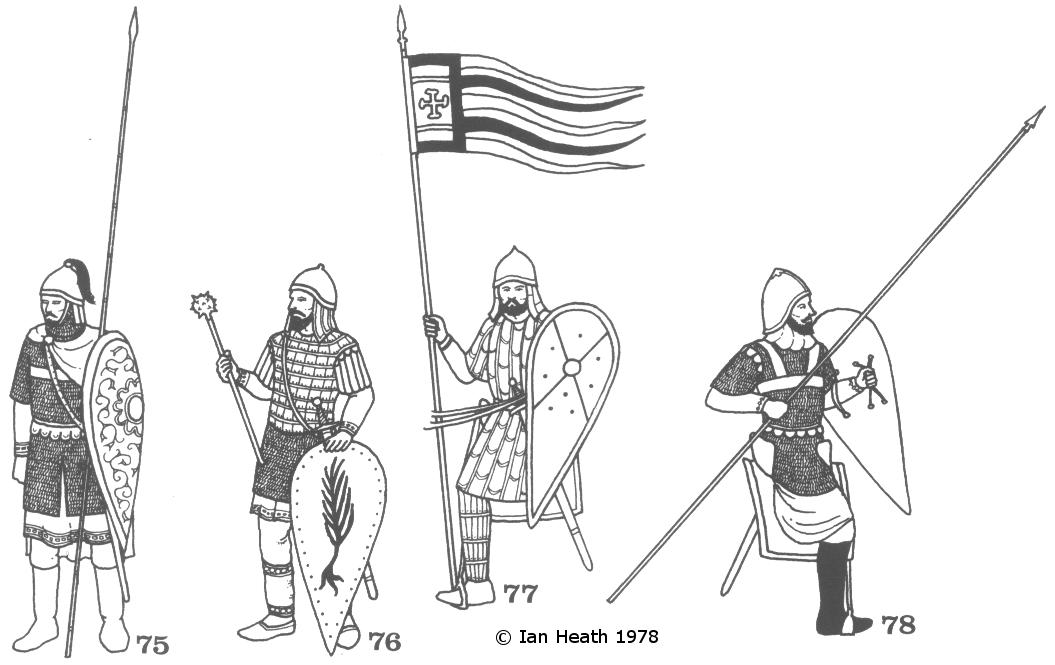
Try Amazon Audible Premium Plus and Get Up to Two Free Audiobooks
BYZANTINE HEAVY CAVALRYMEN
An extract from Armies and Enemies of the Crusades 1096-1291by Ian Heath



75, 76, 77 & 78. BYZANTINE HEAVY CAVALRYMEN
Byzantine cavalry were generally less heavily armoured than their Frankish counterparts, and Frankish chroniclers as a result almost invariably describe them as 'sergeants'.
There was little uniformity of armour, probably only guard units now maintaining any degree of uniform appearance. Of these 4 figures, 2 wear mail corselets with breastbands (plus shoulder pieces in the case of 78), one a scale corselet with pteruges, and the fourth an apparently quilted corselet, probably over mail or lamellar. The latter figure (from Scylitzes) wears in addition splint greaves. Most heavy cavalry in Scylitzes in fact resemble 68 and 76.
All 4 carry kite-shields decorated in almost western fashion. The kite-shield appears to have been invented by the Byzantines in the first half of the 10th century (see 'Armies of the Dark Ages') and by the 11th century was in widespread use, particularly amongst horsemen. Cinnamus, however, contains a passage which seems to imply that prior to the beginning of Manuel's reign (1143) most cavalry were 'armed with round shields' and that long shields 'reaching to their feet' were only introduced during army reforms of c. 1150. Quite how this statement should be interpreted is open to debate, but is worth noting that al-Tartusi refers to the kite-shield quite specifically as 'the shield used by the Franks and Byzantines'. Nevertheless, some late sources still occasionally show round shields used by Byzantine cavalry.
At the beginning of this era some heavy cavalry units still included archers as well as lancers (the Immortals, for example, included bows amongst their equipment) but these seem to have steadily disappeared in the course of the 12th century. Manuel's reforms were basically responsible for their final demise (see page 40) though we still occasionally hear of heavy cavalry horse-archers even at the end of the 12th century; Isaac of Cyprus' army included heavy horse-archers in 1191, including Isaac himself. Most cavalry, however, were lancers. The 12 foot Kontos was still in use during much of this era (the Moslem Quntariya, and probably the Rumh too, were derived from it) but Frankish and Italian lances were also used. Officers still seem to have carried the Bardoukion or mace.